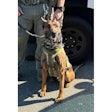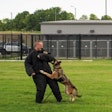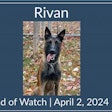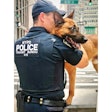Research shows that while drive-by shootings can be triggered by road rage incidents or personal disputes, they are more often associated with street gangs and street drug dealers. The first step in addressing a problem is to assess how big the problem is, but traditional methods of measuring crime may not be effective in measuring the incidence of drive-bys.
Members of street gangs and drug dealers are unlikely to redress their grievances through the criminal justice system. If their territory is invaded or if they are victims of drive-by shootings, they are much more likely to seek retribution with drive-by shootings of their own. This causes a cycle of attack, counterattack, reprisal, and retribution, and may even lead to a gang member "attacking in self-defense."
In response to multiple drive-by shootings, attempt to locate one individual who is both a victim and a suspect. Talking to this person might reveal the impetus behind the shootings, or even put a stop to them. An effective police response can quickly end the bloody game of attack/counterattack. But you'll never know that there's a pattern unless you go looking for one.
To measure the number of drive-by shootings in your jurisdiction accurately, your agency must form a partnership with area hospitals. Gang members shot in drive-bys are not apt to contact the police, but still must seek medical attention. Establish a protocol with neighboring hospitals to contact your agency in all cases of gunshot wounds. City workers, such as those who clean the streets and parks, should be required to contact the police any time a shell casing is found. Neighborhood groups and associations, as well as nightclub owners, may informally provide intelligence.
Once a drive-by shooting occurs, quickly respond to the area. A study of more than 2,000 drive-by shootings concluded that only about five percent of drive-bys are fatal; more than half of victims sustain injuries to the leg. In most cases, the victim will live to tell the story. If you get there fast enough, he or she might even tell it to you.
This data reveals attackers' low shooting accuracy, which may be a function of inexperienced shooters aiming at moving targets from moving vehicles. Unfortunately, this inaccuracy also accounts for a high number of injuries to innocent bystanders. The public may not care too much when gang members shoot each other, but injuries to innocent bystanders are not suffered well by the public or the media.
Despite the victim survival rate and the commission of drive-bys on public streets, witnesses and solid information are often hard to come by. A drive-by shooting is a quick, chaotic incident and most people at the scene are more concerned with taking cover than getting information. The shootings often occur at night and are performed by gang members who intimidate those in the community. The actors often take steps to conceal their identity (by wearing face masks) as well as the identity of the vehicle (by using stolen vehicles or stolen license plates). But these obstacles needn't prevent you from performing an effective investigation.
Take Action
If you're the responding officer to a drive-by shooting, ascertain whether it was a planned assault or a random incident. Was the victim a gang member or known drug dealer? Was the victim alone or with others? Did the victim or anyone else return fire? What was the victim doing immediately prior to being shot? Could the actor have known that the victim would be there (a party or bar), or did the actor just happen upon the victim?
Canvass the neighborhood to ascertain what type of vehicle was involved. Was it seen circling the area? Did the vehicle speed off or drive from the scene slowly? Are there any known tensions in the area?
A police department plagued with a number of drive-by shootings is expected to respond proactively. The obvious first step is to crack down on the two tools used in drive-by shootings: cars and guns.
Officers first should be trained on the safety and legalities of motor vehicle stops and warrantless searches. This may include specialized training on criminal indicators. Use research to determine the at-risk times and locations of drive-by shootings. Then conduct zero tolerance patrols, lawfully contacting as many motor vehicles as possible and conducting searches under the aegis of probable cause or consent.
In extreme cases, consider setting up roadblocks. Obtaining judicial and community support prior to establishing roadblocks is vital to the success of this program, so you must be able to show that the roadblocks (or any other enforcement) target a specific criminal problem, not a segment of the population. Meetings with the community and its formal and informal leaders will help get the message across and determine the best way to achieve the overall goal of citizen safety.
With the assistance of the community and local schools, begin tracking gang feuds and tensions. As already mentioned, in many cases, a drive-by shooting is not an isolated incident, but rather an escalation or continuation of an ongoing altercation. Therefore, your agency should have a system in place to track the rising hostilities.
Another useful tool in combating a rash of drive-by shootings is an incentive program for gang members and the community. Many people are afraid to come forward with information about crimes for fear of retaliation. To convince witnesses that sharing information is worth their while, work with the necessary agencies to offer financial support or even relocation expenses to community members who bravely come forth with information. Also, gun buyback programs that exchange money or goods for guns have had limited success in removing guns used in drive-by shootings, but any gun off the street is considered a good thing.
Ask for Help
While there is much your agency can do, you don't have to do it all alone. Seek assistance from other branches of the criminal justice system. If information indicates that previously convicted offenders are involved, you can team with parole or probation officers in your jurisdiction to conduct searches. Using the stipulations of parole or probation agreements, you can legally search the homes, cars, and persons of high-risk individuals. These searches can be carried out quickly and have been very effective in locating illegal weapons and preventing gang violence.
If you determine any drive-by shootings to be gang related, a liaison can petition the court to issue civil injunctions similar to restraining orders. These injunctions would make certain activities grounds for arrests. While the specific activities should be tailored to each situation, they could include hanging around with other known gang members, loitering in certain parks at certain times, or attending certain nightclubs that are known gang hangouts.


















